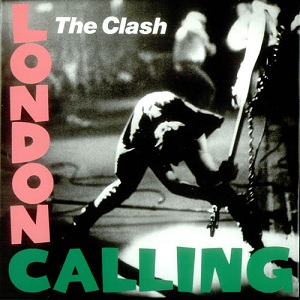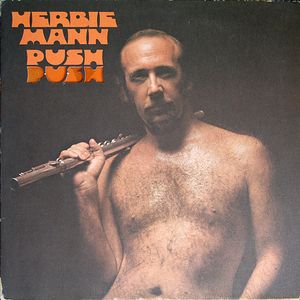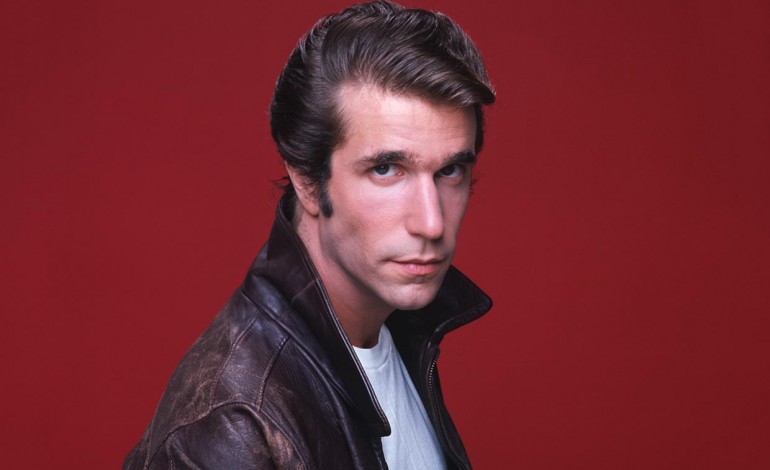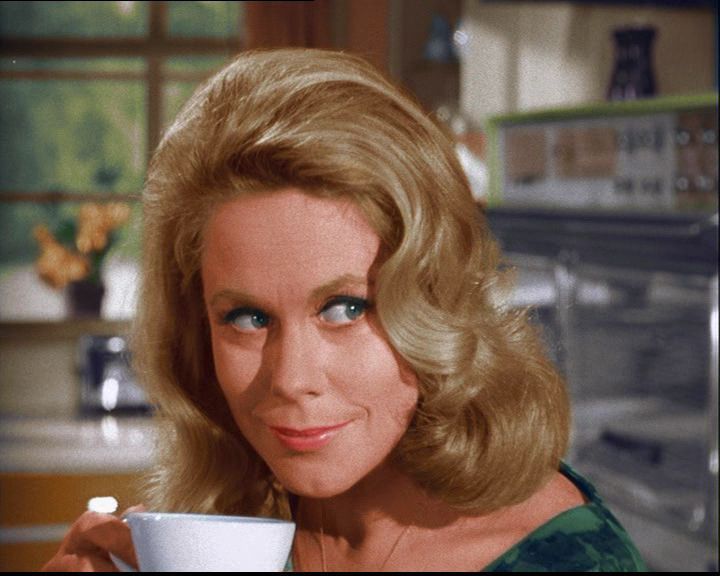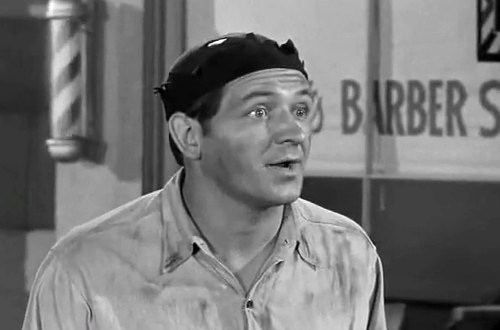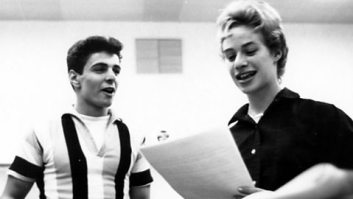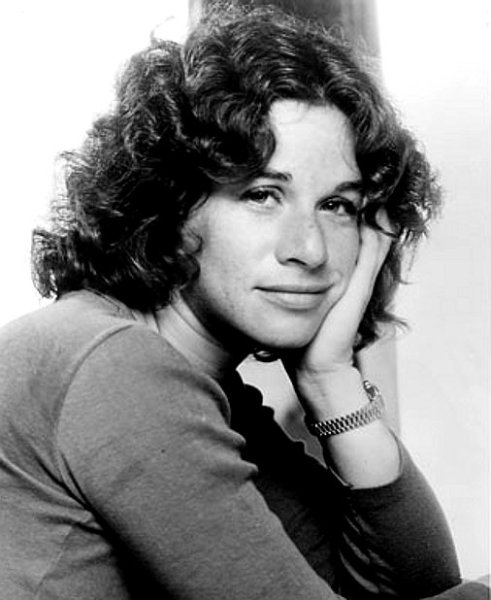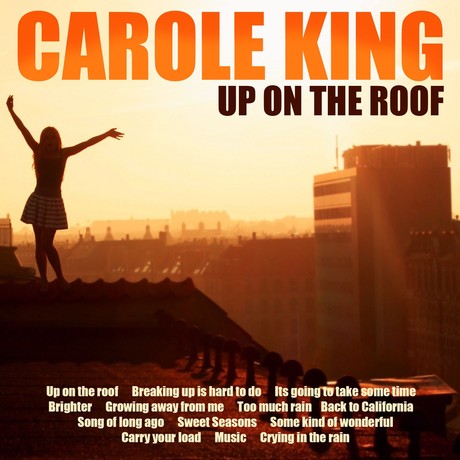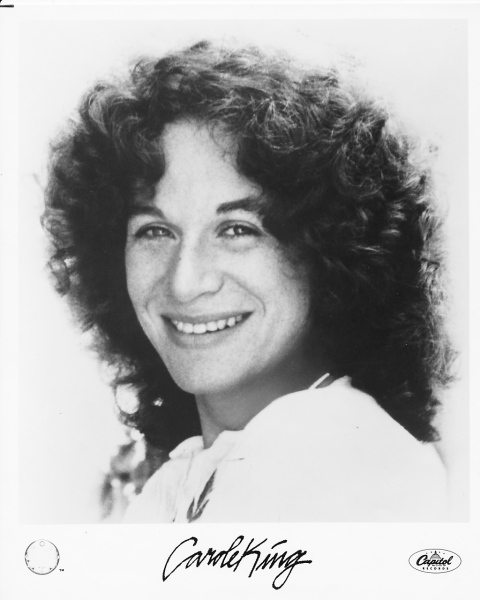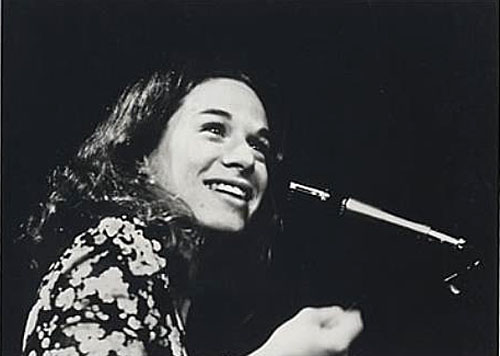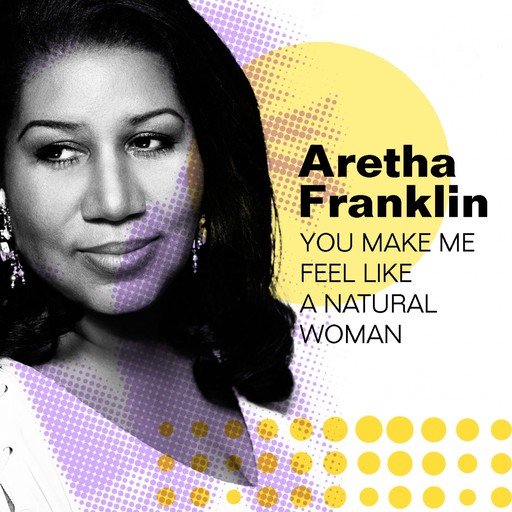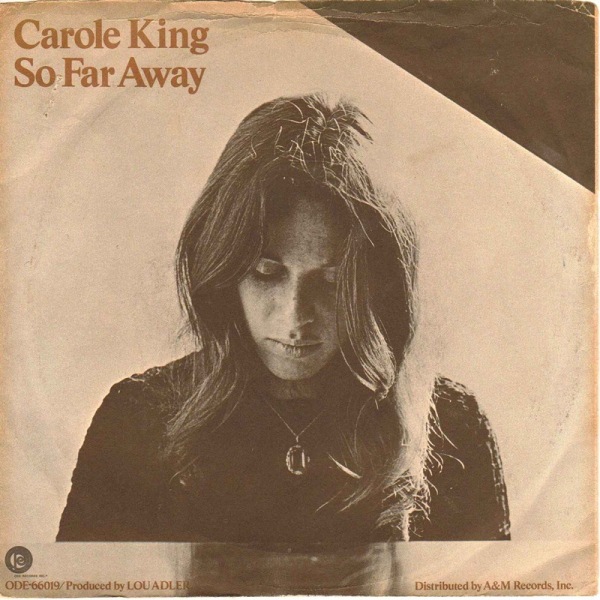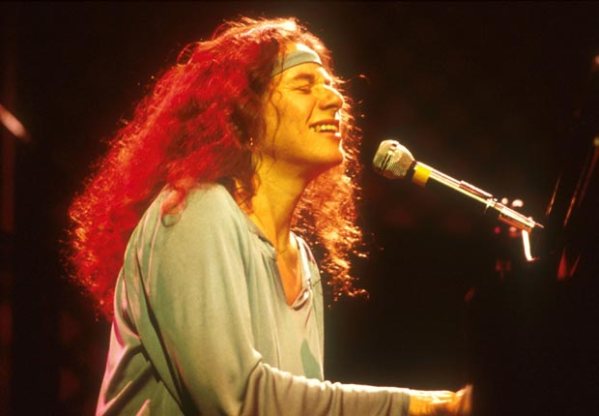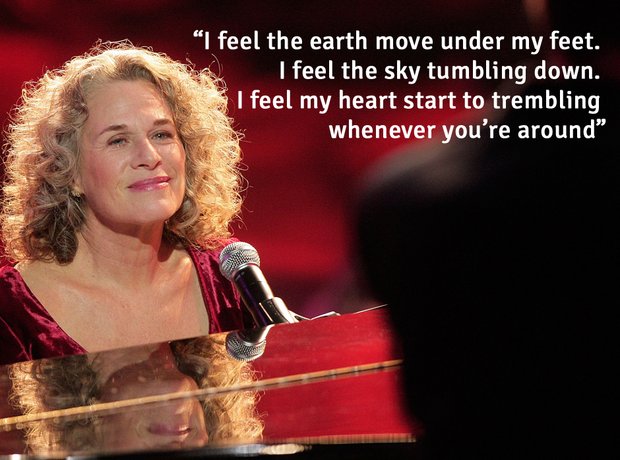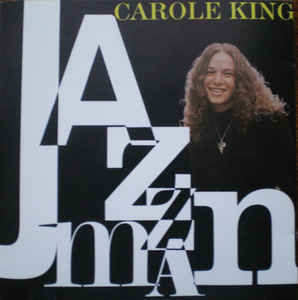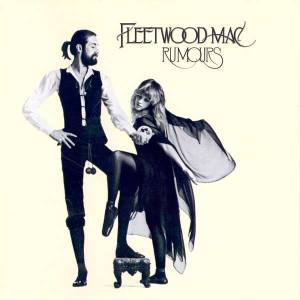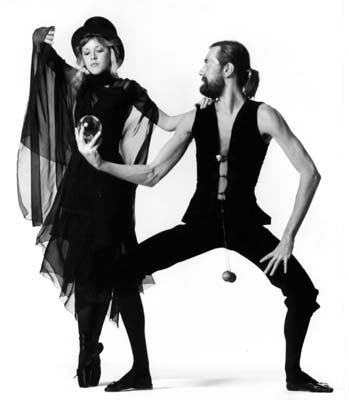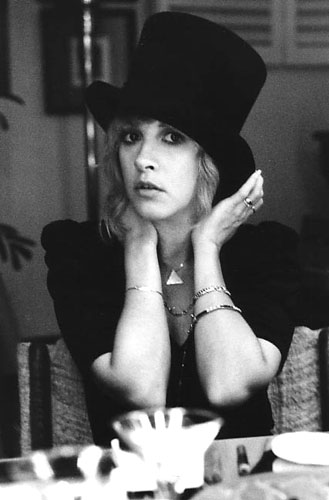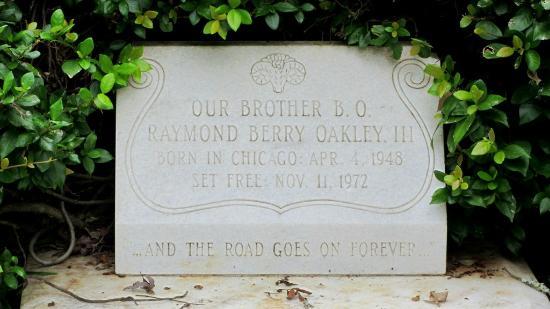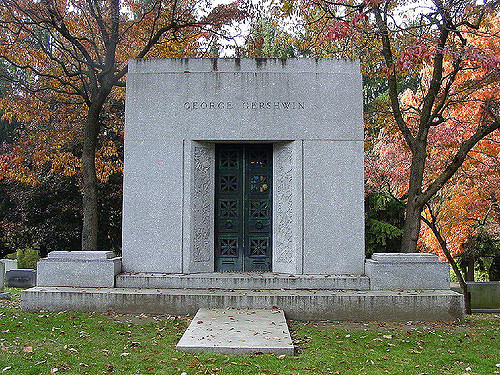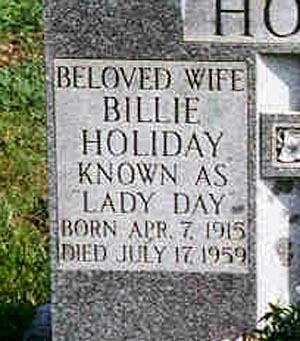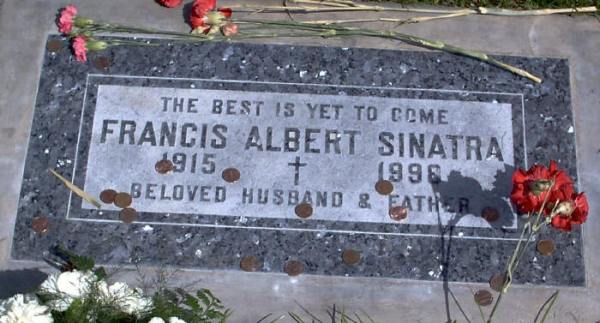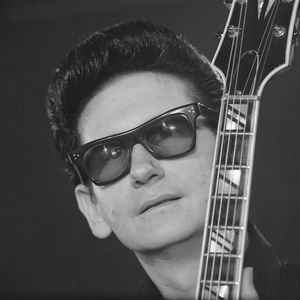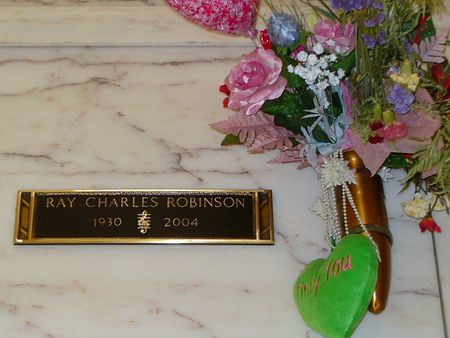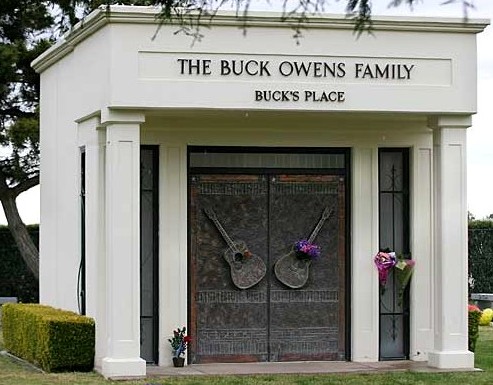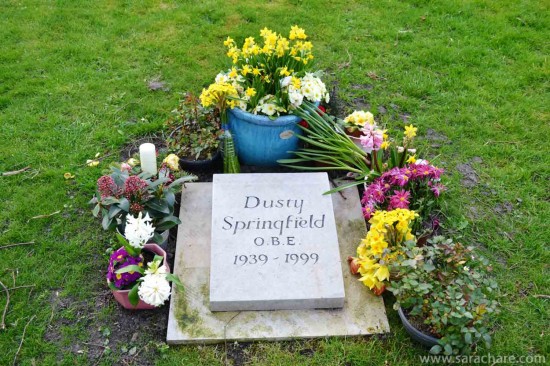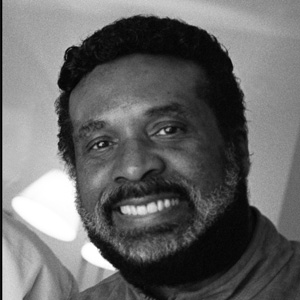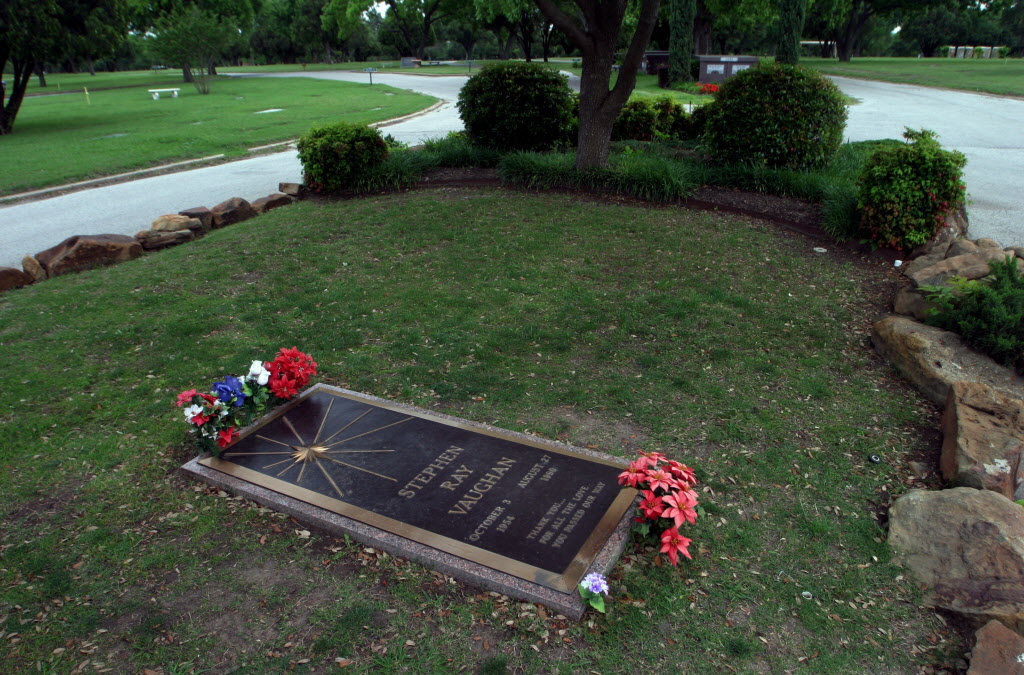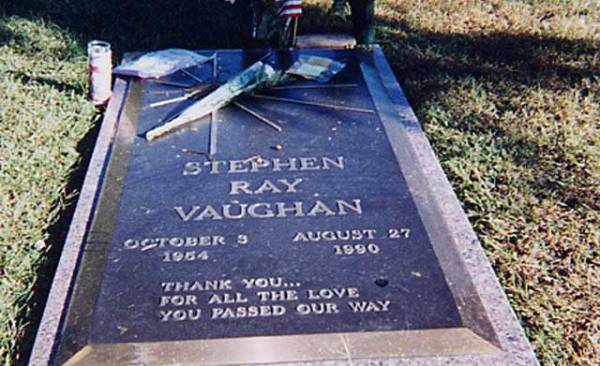
I’ve always loved country pickers. In a genre as basic and simple as country music, it’s fascinating just how great these guys are. Of course “country” encompasses other styles too; like rockabilly, bluegrass, folk, and even blues. The great players like the ones we’re going to discuss, almost always throw in some rock and jazz licks. And who doesn’t love a little “chicken pickin'”? There are so many great players out there like Vince Gill, Brad Paisley, Doyle Dykes, Keith Urban, Brent Mason, and others. But, in this article, I want to focus on my favorite old school guys; the pioneer guitar pickers. I will do the new guys at another time. These 10 players are part of the foundation of country guitar picking and they are my favorites. All have played a role in my own musical development, especially Merle Travis. I’m going to list them randomly, but I’m starting out with “Mr. Guitar” at the top of the list just out of respect. Enjoy!

Chet Atkins (June 20, 1924 – June 30, 2001)
The Lowdown- Chester Burton Atkins was born in Luttrell, Tennessee, near Clinch Mountain and was the youngest of three boys and a girl. His folks divorced when he was six and he was mostly raised by his mother. He started on ukulele and fiddle but moved on to guitar at age nine. Because of an asthmatic condition, he eventually moved to live with his Dad outside of Columbus, Georgia. Because of his illness, he was forced to sleep in a straight-back chair to breathe comfortably. On those nights, he played his guitar until he fell asleep holding it; a habit which lasted his whole life. He was a practice nut and by high school, was an accomplished guitar player. When he was 15, he heard the great fingerpicker, Merle Travis, which pretty much changed his life. Chet expanded the “Travis Picking” style to include the use of two more fingers of the right hand. Chet began a long-time association with Gretsch guitars. At 23, he made his first recordings for RCA Victor. He began doing sessions and producing, and eventually taking over RCA Victor’s Nashville division. There, he modernized country music, taking out the fiddles and steel guitars and creating the Nashville Sound, smoothing out country music by adding strings and sophisticated background vocals and giving country more of an opportunity for crossover success. He went on to have hit albums and became an RCA executive, which he grew tired of by the late 70s. Through the years, his stature as “Mr. Guitar” grew and he branched out to jazz and even classical music. He never like being called a “country guitarist,” rather he preferred being known as a guitarist, period. He is considered one of the ten most influential guitarists of the 20th century. Atkins received numerous awards, including 14 Grammy awards and nine Country Music Association awards for Instrumentalist of the Year. In 1993, he was honored with the Grammy Lifetime Achievement Award. He died of cancer on June 30, 2001, at his home in Nashville, Tennessee, ten days after his 77th birthday. His memorial service was held at Ryman Auditorium in Nashville.
What Made Him Great- Where do I start? He was an amazing finger stylist who perfected the ability to play chords, melody, and bass lines simultaneously. He mixed harmonics, arpeggios and pure notes with a brilliantly clear tone; there was no cheating in his playing by using distortion effects. His influence was vast as he branched out to styles like jazz, classical, and flamenco. He introduced those styles to many players who’d never really heard classical or flamenco guitar. Like I mentioned earlier, he was a practice freak; sometimes up to 16 hours a day. His playing reflected it. The guitar was an extension of his body and his love for it was plainly obvious. Chet wasn’t an extremely verbal guy. He would rather play than talk and he always seemed to be able to make it look easy. Did you know he played on “Heartbreak Hotel” by Elvis Presley? Ditto for Hank Williams’ “Your Cheating Heart.” Chet jokingly granted himself with an honorary degree, the CGP (Certified Guitar Player). He would go on to bestow it on other great players too; a true honor indeed. In the links below, I’m including two beautiful examples of Chet’s playing. The first one is an achingly lovely “Waltz For The Lonely” and the next is his brilliant version of “Mr. Sandman.”
Listen to the Master.
Listen- https://www.youtube.com/watch?v=k2liutJpLOU
https://www.youtube.com/watch?v=n-c66SJPuUI

Albert Lee (Born December 21, 1943)
The Lowdown- Albert William Lee was born in Lingen, Herefordshire, but grew up in Blackheath, London. His father was a musician, and Lee studied piano, taking up the instrument at age seven. He picked up guitar at age 15 and quit school at the age of 16 to play full time. He played with a variety of bands from then on, mostly playing R&B, country music and rock and roll. His main guitar influences included Cliff Gallup, James Burton and Jerry Reed. He had some success with Chris Farlowe and the Thunderbirds and then in 1968, he joined Head, Hands and Feet and became a guitar hero. In 1974, he left for Los Angeles and got heavily involved in the session scene. In 1976, he was asked to join Emmylou Harris’ Hot Band, replacing one of his heroes, James Burton, who was returning to perform with Elvis Presley. Then he spent five years with Eric Clapton and since then, his career has involved lots of session work in LA and Nashville, and one prestigious gig after another. He is known as “the guitar player’s guitar player” and is also referred to as “Mr. Telecaster.”
What Makes Him Great- His skills on the guitar are jaw-dropping. If you love lightning fast chicken picking, you will love Albert Lee. He uses a “pickslanting” technique that allows him to fly smoothly across the strings. Known for his virtuosity, he can also play beautiful, slow, melodic passages that almost have the silky sound of the pedal steel guitar. He is a giant of a guitarist in the industry but not well known commercially. He is a gentleman sideman who is not driven by ego, but musically, is the biggest man on the stage.
Listen- https://www.youtube.com/watch?v=iywt3tbGbSE
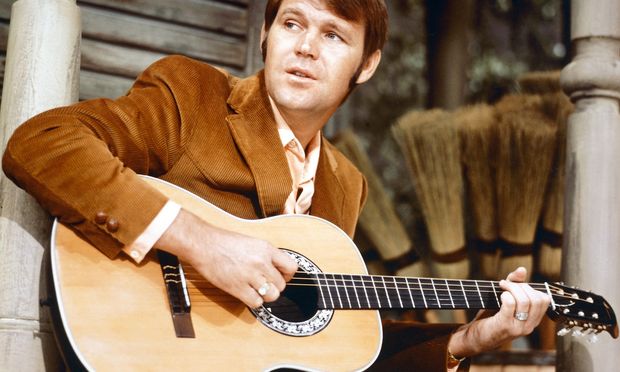
Glen Campbell (born April 22, 1936)
The Lowdown- Glen Travis Campbell was born in Billstown, a tiny burg near Delight, Arkansas. He is the seventh son of twelve children and his Dad was a sharecropper. He gives credit to his Uncle Boo for teaching him guitar. At age 18, he moved to Albuquerque, NM to join his uncle’s band, Dick Bills and the Sandia Mountain Boys. In 1960, he moved to Los Angeles to become a session musician. Later that year, he joined The Champs, who had a big instrumental hit, “Tequila”. His session work grew and he became part of a legendary group of studio musicians later known as The Wrecking Crew. Glen played on just about everyone’s records including Elvis Presley, Frank Sinatra, Nat King Cole, The Monkees, Merle Haggard, and many more. In 1961, he signed as a solo artist with Crest Records, and the next year signed with Capital with only minor success. From 1964 to 1965, he was a touring member of The Beach Boys filling in for Brian Wilson; playing and singing harmony on their album Pet Sounds. In 1967, he hooked up with John Hartford and became an “overnight” success with “Gentle on My Mind.” Also in 1967, Campbell began a working relationship with songwriter Jimmy Webb that would indeed catapult his career into the stratosphere. He and Webb shared a rare synchronicity; it’s as if their musical chemistry was fated. It is a rare and special thing for an artist and songwriter; Burt Bacharach enjoyed the same mysterious connection with Dionne Warwick. Huge hits followed: “By The Time I Get to Phoenix,” “Wichita Lineman,” “Galveston;” Campbell was a certified star. He got his own TV show and the hits kept on coming. He even did a little acting. In 2005, he was inducted into the Country Music Hall of Fame.
In June 2011, Campbell announced he had been diagnosed with Alzheimer’s disease six months earlier. According to his family, symptoms of the disease had been occurring for years, becoming more and more evident as the years progressed. Sadly, Glen is currently living in a Nashville memory care facility and is in the final stages of his disease.
What Makes Him Great- Glen Campbell has always been a musical hero of mine. He can play anything and has a great singing voice too. His versatility on the guitar is one of his greatest strengths. He can play any style and play it with speed and accuracy. A great studio player like Glen had to be able to deliver quickly with minimal takes. He is one of the greatest session players ever and he is a pro’s pro.
Listen- https://www.youtube.com/watch?v=0bhuxkzjuQc
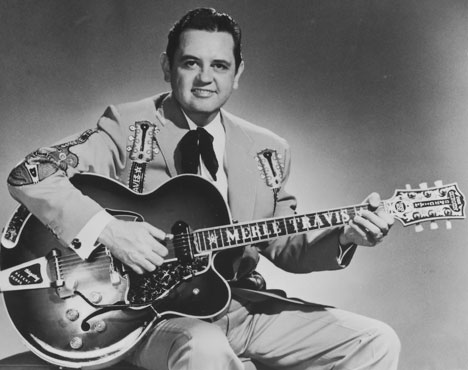
Merle Travis (November 29, 1917 – October 20, 1983)
The Lowdown- Merle Robert Travis was born and raised in Muhlenberg County, Kentucky. He became interested in the guitar early in life and originally played one made by his brother. From the age of 18, he began making a name for himself by playing various weekday radio shows including WLW radio in Cincinnati. In 1943, he and Grandpa Jones began recording for King Records. Because WLW barred their staff musicians from recording, Travis and Jones used the pseudonym The Sheppard Brothers. With World War II and the threat of being drafted, Travis enlisted in the US Marine Corps. After his hitch was up, he helped form The Brown’s Ferry Four which has been called “possibly the best white gospel group ever.” What followed next was various stage shows, “soundies”, bit parts in B Westerns, and various recordings. In 1946, he recorded an album of folk songs that included his composition “Sixteen Tons.” It became a number one hit in 1955 for Tennessee Ernie Ford. Through the 40s and 50s, he did numerous radio and TV shows. Travis did have his demons. He was a heavy drinker, very insecure, and suffered stage fright. He was very highly respected by other musicians and Chet Atkins even named his daughter Merle Atkins, in Travis’s honor. His career got a lift in the early sixties with the folk music revival. In the 1970s, he appeared on numerous country music TV shows and did some duet albums with Chet Atkins, as well as various other recordings that were well regarded. In 1983, at the age of 65, Travis died of a heart attack at his Tahlequah, Oklahoma home.
What Made Him Great- His “Travis Picking” style allowed him to play melodies, rhythm parts, bass parts, and chords all at once. With just a six-string guitar, he could sound like a mini-orchestra. I learned his picking style as a teen, though he was obviously a million times more advanced. He used a thumbpick that he could also use as a flatpick as he incorporated bends, slides, and harmonics. His style incorporated elements of ragtime, blues, boogie, jazz and Western swing. He really was a remarkable guitarist and is considered one of the most influential American players of the 20th century. He could sing too!
Listen- https://www.youtube.com/watch?v=N8vOTKMqzw4

Roy Clark (born April 15, 1933)
The Lowdown- Roy Linwood Clark was born in Meherrin, Virginia and lived as a teenager in southeast Washington, D.C., where his father worked at the Washington Naval Yard. At 14, Clark began playing banjo, guitar, and mandolin, and by age 15 he had already won two National Banjo Championships and world banjo/guitar flatpick championships. At 17, he had his first appearance on the Grand Ole Opry. At age 23, he obtained his pilot’s license and then bought a 1953 Piper Tri-Pacer, which he flew for many years. By 1955, he was a regular on Jimmy Dean’s TV show. Dean, who was a stickler for punctuality among musicians in his band, the Texas Wildcats, fired Clark for habitual tardiness, telling him, “You’re the most talented person I’ve ever fired.” In 1960, he worked as a guitarist in Las Vegas. When Jimmy Dean hosted The Tonight Show in the early 1960s, he asked Clark to appear, introducing him to a national audience for the first time. Following that, Clark had a recurring role on The Beverly Hillbillies and also appeared on The Odd Couple and The Jackie Gleason Show. He pursued a fairly successful recording career and had a #9 hit with “Yesterday When I Was Young.” In 1969, he and Buck Owens hosted Hee Haw, a country music and comedy show that ran for 24 years. It made Roy Clark a household name. In 1983, Clark opened the Roy Clark Celebrity Theatre in Branson, Missouri, becoming the first country music star to have his own venue there. He sang at Mickey Mantle’s funeral, wrote an autobiography, and still occasionally tours at the age of 83. In 2009, he was inducted into the Country Music Hall of Fame.
What Makes Him Great- It seems like Roy Clark has been around forever. Give him anything with a string and he’ll play it. He is just a fantastic guitar player. He has a very muscular, aggressive style with a jack-hammer right hand; there is nothing meek about his guitar playing. He is also an amazing banjo player. After all, he DID win two National Banjo Championships by age 15. He has a great sense of humor and sometimes his comedy overshadows his guitar skills. Often, he’ll play a very complicated instrumental while mugging and making goo-goo eyes at the audience. He once explained that he lacked confidence and his humorous antics were meant as a cover-up. He is a very well-rounded performer that sounds absolutely authentic in any style he plays, be it straight country, gospel, or a world-class version of “Malagueña”. Roy Clark’s audience loves him and he loves them back.
Listen- https://www.youtube.com/watch?v=lxDQQDF6j0Y

James Burton (born August 21, 1939)
The Lowdown- James Edward Burton was born in Dubberly, Louisiana. Burton began playing guitar as a child. By the time he was thirteen, he was playing semi-professionally. A year later he was hired to be part of the staff band for the popular Louisiana Hayride radio show in Shreveport, Louisiana. While he was still a teenager, Burton left Shreveport for Los Angeles, where he joined Ricky Nelson’s band. There, he made numerous recordings as a session musician. Burton played the guitar solo on Dale Hawkins 1957 hit song “Susie Q.” He made his name doing session work for stars like Buck Owens, Merle Haggard, Joni Mitchell, Judy Collins, and he held one of the most coveted jobs in music; as Elvis Presley’s guitarist from 1969 till Presley’s death in 1977. He toured and recorded with Emmylou Harris and was with John Denver until his death in 1997. With Denver, he recorded 12 albums and toured around the world. He also toured intermittently with Elvis Costello for a decade. In 2001 he was inducted into the Rock and Roll Hall of Fame. In 2005, Burton started the annual James Burton International Guitar Festival in Shreveport, Louisiana to raise money for his charitable foundation. In 2007 he was inducted into the Musicians Hall of Fame and Museum in Nashville, TN as a member of the legendary L.A. session player group known as The Wrecking Crew. He still maintains a steady schedule of gigs and recording sessions, and has several album projects planned.
What Makes Him Great- James Burton developed the “chicken Picking” style of guitar that we keep mentioning. Using a fingerpick and a flatpick, and using a bright, clear, crisp tone he could make the guitar snap, pop and stutter, while incorporating double-stops, pull-offs, hammer-ons and open strings. He has been called the “Hardest Working Guitarist in the Business.” He has played with just about everyone and has been a sideman for almost his entire career. Let’s put it this way: Elvis Presley could have hired any guitarist in the world; he chose the man with the Telecaster, James Burton.
Listen- https://www.youtube.com/watch?v=sk28kAdCmz4

Jerry Douglas (born May 28, 1956)
The Lowdown- Jerry Douglas plays a Dobro (resonator guitar) and for my money, he is the best picker on the planet.
Gerald Calvin “Jerry” Douglas was born in Warren, Ohio and began playing the Dobro at age eight with encouragement from his father, who was also a bluegrass musician. By his teen years, Douglas was already a member of his father’s band. Douglas was discovered at a festival by the Country Gentlemen, who took him on tour with them for the rest of the summer and later brought him into the recording studio. From there, Douglas established himself as a hugely in-demand session musician; he has played on more than 1,600 albums with a hugely diverse group of artists like Ray Charles, Paul Simon, James Taylor, Dolly Parton, Phish, Eric Clapton, Ricky Skaggs, Elvis Costello, Johnny Mathis and so many more. He is also a producer, a solo artist, composer, and has been a touring and recording member of Alison Krauss and Union Station since 1998. Douglas has received fourteen Grammy Awards and has won the Country Music Association’s ‘Musician of the Year’ award three times. His nickname is “Flux” which is sort of a capo for a Dobro, or the bar he holds in his left hand. If you’re lucky enough to get Jerry Douglas to play on your record date, you’re getting the best of the best. On top of all that, he’s a helluva nice guy.
What Makes Him Great- For starters, he just has the gift. He is a virtuoso that can play whatever he wants. He has eclectic tastes which run toward bluegrass, jazz, blues, folk, rock, Celtic and straight-ahead country as well. His right hand attack can be fierce and aggressive and he can also play the sweetest, most sensitive lines you’ve ever heard. His playing will raise goose bumps on your arm. He makes it look easy…but it’s not. He plucks the strings using a plastic thumbpick and metal picks on his index and middle fingers. He also uses the edge of his palm to mute strings near the bridge. You have to find your notes by ear. He mutes unwanted strings and eliminates the noises and sympathetic vibrations with his pinky and ring fingers. It is not easy, and when you consider the skill he displays, it seems it would be easier to flap your arms and fly. Jerry Douglas is a pioneer and is to the Dobro, what Jimi Hendrix was to the electric guitar.
Listen- https://www.youtube.com/watch?v=h0dVqmegKBw

Buddy Emmons (January 27, 1937 – July 21, 2015)
The Lowdown- Buddy Gene Emmons was born in Mishawaka, Indiana. When he was 11 years old, his father bought him a 6-string lap steel guitar and arranged for lessons at the Hawaiian Conservatory of Music in South Bend, Indiana, which Buddy attended for about a year. By age 15, Buddy’s playing had progressed considerably and his parents bought him a triple-neck Fender “Stringmaster” steel guitar, and he began performing with local bands in South Bend such as The Choctaw Cowboys. He quit high school at 16 and the next year found him in Detroit playing with Casey Clark. The next year, Little Jimmy Dickens heard Emmons playing with Casey Clark and offered him a job with his band, so at the age of 18, in July, 1955, Emmons moved to Nashville to join one of the hottest bands in country music. The next year, Dickens dissolved his band to go solo, and Emmons began doing sessions in Nashville. He was now firmly on his career path of contributing exquisite steel playing to the records of some of the greatest stars of country and contemporary music. He also contributed heavily to the design, development, and evolution of the pedal steel guitar as a musical instrument. Around 2001, he began suffering from a painful repetitive motion injury to his right thumb and wrist, which caused him to stop playing for over a year. Though fully recovered, Emmons chose not to return to regular recording session work. He retired in 2007 after the sudden death of his wife Peggy. Emmons died of a heart attack in Nashville, Tennessee on July 21, 2015
What Made Him Great- As Lloyd Green, a highly in-demand studio steel guitarist said of Emmons in 1977, “He’s not an ordinary guy. In my opinion, Buddy Emmons is probably the most intelligent and talented musician who’s ever played the instrument. He’s like Picasso or Michelangelo. That might be laying it on a little thick, but he’s just flawless in his playing. Nobody is the composite player he is. He was the first modern great steel player and nobody’s surpassed him yet.”
He was the world’s foremost steel guitarist and he just played it better than anyone else. His innovative playing ranged from tasteful ballad accompaniment and classical music to be-bop jazz, big band swing standards, and Western swing. He could play fiery, complex, single-note solos that just would leave you amazed, and also play really imaginative chordal work. He made it all look so natural and effortless. He was an innovator on the instrument and the music.
Listen- https://www.youtube.com/watch?v=OfYfQ24sdBQ

Jerry Reed (March 20, 1937 – September 1, 2008)
The Lowdown- Jerry Hubbard Reed was born in Atlanta, Georgia. His parents separated four months after his birth, and he and his sister spent seven years in foster homes or orphanages. Reed was reunited with his mother and stepfather in 1944. He picked up the guitar as a child, and by high school, he was already writing and singing music. At age 18 he was signed by publisher and record producer Bill Lowery to cut his first record, “If the Good Lord’s Willing and the Creek Don’t Rise”. At Capital Records he recorded both country and rockabilly singles to little notice, until label mate Gene Vincent covered his “Crazy Legs” in 1958. By 1958 Lowery signed Reed to NRC, and he recorded for NRC as both artist and as a member of the staff band, which included other NRC artists Joe South and Ray Stevens. He then served two years in the US Army. Afterward, he moved to Nashville to pursue a songwriting career (Brenda Lee had recorded his “That’s All You Got To Do.”). He became a popular session and tour guitarist and he met Chet Atkins in 1965 who signed him to RCA and produced some of his tunes. Reed would later credit Atkins with all of his success. In 1967, he did some sessions with Elvis Presley, who had a hit with Reed’s “Guitar Man” and Jerry played on the session at Elvis’ request. In 1970, Reed had a #8 hit with “Amos Moses”, did an album with Chet Atkins, became a regular on The Glen Campbell Goodtime Hour, and in 1971 he had his biggest hit, the chart-topper “When You’re Hot, You’re Hot,” which won him the 1972 Grammy for best male country vocal performance. Reed was eventually given the title of CPA (Certified Guitar Player) by Chet Atkins; a very high honor. Reed spent his career touring, doing sessions, pursuing a solo career, and had a pretty fair acting career; he was in all three Smoky and the Bandit movies. He also invested in the Nashville Sounds, a minor league baseball team. Jerry Reed died in Nashville, Tennessee on September 1, 2008, of complications from emphysema.
What Made Him Great- Jerry Reed was a lot like Roy Clark in that he was a big cut-up while playing. His laughing and joking and “good ol’ boy” persona tended to downplay the fact that Jerry Reed was a monster guitar player. Chet Atkins actually said thought Reed was a better fingerstyle player than he himself was; amazing. Jerry Reed’s guitar playing was underrated due to his comedy and acting but he had mind boggling guitar technique that incorporated intricate fingerpicking, gorgeous cascading harp-style runs, and an infectious, funky sense of rhythm and humor. He was fearless on the instrument. He was an emotional, sensitive and charismatic guy. He was so fun to watch, not only because of his humor and guitar technique, but also because he made playing the guitar look like so much fun.
Listen- https://www.youtube.com/watch?v=Ni8KBhnebwE

Tommy Emmanuel (born 31 May 1955)
The Lowdown- William Thomas Emmanuel was born in Muswellbrook, New South Wales, Australia, as one of six children. His mother gave him his first guitar at age four and taught him to accompany her as she played lap steel guitar. His moment of epiphany came at age seven when he heard Chet Atkins on the radio. In 1961, his father created a family band, sold their home and took the family on the road. With the family living in two station wagons, much of Emmanuel’s childhood was spent touring Australia, playing rhythm guitar, and rarely going to school; that is until the authorities insisted the Emmanuel children had to go to school regularly. His Dad died in 1966 and Tommy eventually moved to Sidney where he started winning talent contests late in his teen years. Through the 70s and 80s he did sessions and played in various nationally known bands and was becoming well known throughout Australia. In the late 80s he began a solo career and the world would soon discover his skills on the guitar. In 1997, Emmanuel and Chet Atkins recorded as a duo and released the album The Day Finger Pickers Took Over The World, which was also Atkins’ last recorded album before he died. Atkins stated about Tommy: “He is one of the greatest guitar players I’ve ever seen.” In July 1999, at the 15th Annual Chet Atkins Appreciation Society Convention, Atkins presented Emmanuel with a Certified Guitar Player award (CGP), an honor Chet personally bestowed to only four other guitarists. Chet Atkins described Tommy as a “fearless” fingerpicking guitar player. In 2000, Tommy and his brother Phil performed at the closing ceremony of the Summer Olympic Games in Sidney to a televised audience of 2.85 billion people. In December 2007, Emmanuel was diagnosed with heart problems and was forced to take a break from his hectic touring schedule due to exhaustion, but returned to full-time touring in early 2008.
What Makes Him Great- We started this piece with Chet Atkins and its most fitting that we end with the wonderful Tommy Emmanuel, since he could be called the heir apparent to Chet Atkins. Like Chet, Tommy possesses almost supernatural chops, but where Chet was the “Country Gentleman,” Tommy Emmanuel has more of a wild man personality; can handle anything on the acoustic guitar and do it with a rock and roll attitude. Like most fingerpickers, Emmanuel plays bass lines, chords, melodies and harmonies simultaneously using the thumb and fingers of the right hand. Amazingly, he has never had formal music training, and does not read or write music. As a solo performer he never plays to a set list and uses a minimum of effects onstage, and he usually completes studio recordings in one take. He enjoys incorporating percussive effects on the guitar with his hands while he plays. This leaves his guitars looking pretty beaten up. Onstage, he is a whirlwind of motion; while handling melody, bass, and chords, he’ll throw in warp-speed licks and cascading harmonic progressions. Tommy Emmanuel is an emotional guy who plays with great passion, technique, humor, and showmanship. And he loves The Beatles too!
Listen- https://www.youtube.com/watch?v=cPkQn5nDTZs
https://www.youtube.com/watch?v=0cHeNscKZN0
Please rescue a homeless animal!
David




 The human body is exquisite. It has served me pretty well for a long time, but there is a limit to its wonders. I’ve known, for a while, that I need a colonoscopy. My problem is I don’t want a colonoscopy. Is my fear of getting a colonoscopy great enough that I’m willing to risk death?
The human body is exquisite. It has served me pretty well for a long time, but there is a limit to its wonders. I’ve known, for a while, that I need a colonoscopy. My problem is I don’t want a colonoscopy. Is my fear of getting a colonoscopy great enough that I’m willing to risk death? 

